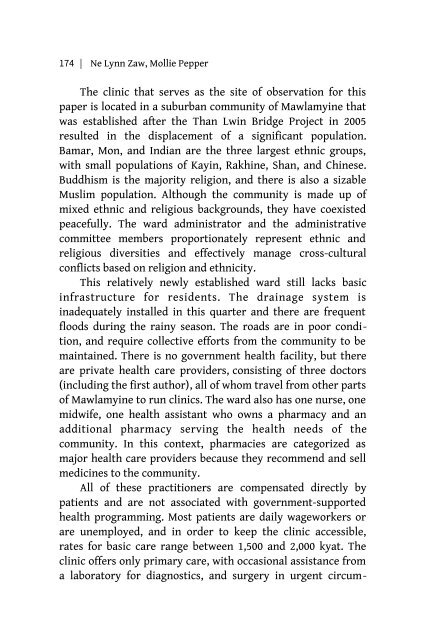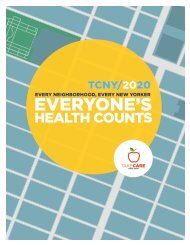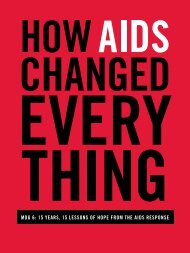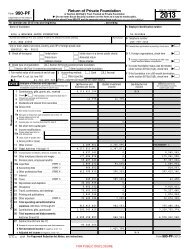experiences Mawlamyine
8b-Zaw-Pepper-en
8b-Zaw-Pepper-en
You also want an ePaper? Increase the reach of your titles
YUMPU automatically turns print PDFs into web optimized ePapers that Google loves.
174 | Ne Lynn Zaw, Mollie Pepper<br />
The clinic that serves as the site of observation for this<br />
paper is located in a suburban community of <strong>Mawlamyine</strong> that<br />
was established after the Than Lwin Bridge Project in 2005<br />
resulted in the displacement of a significant population.<br />
Bamar, Mon, and Indian are the three largest ethnic groups,<br />
with small populations of Kayin, Rakhine, Shan, and Chinese.<br />
Buddhism is the majority religion, and there is also a sizable<br />
Muslim population. Although the community is made up of<br />
mixed ethnic and religious backgrounds, they have coexisted<br />
peacefully. The ward administrator and the administrative<br />
committee members proportionately represent ethnic and<br />
religious diversities and effectively manage cross-cultural<br />
conflicts based on religion and ethnicity.<br />
This relatively newly established ward still lacks basic<br />
infrastructure for residents. The drainage system is<br />
inadequately installed in this quarter and there are frequent<br />
floods during the rainy season. The roads are in poor condition,<br />
and require collective efforts from the community to be<br />
maintained. There is no government health facility, but there<br />
are private health care providers, consisting of three doctors<br />
(including the first author), all of whom travel from other parts<br />
of <strong>Mawlamyine</strong> to run clinics. The ward also has one nurse, one<br />
midwife, one health assistant who owns a pharmacy and an<br />
additional pharmacy serving the health needs of the<br />
community. In this context, pharmacies are categorized as<br />
major health care providers because they recommend and sell<br />
medicines to the community.<br />
All of these practitioners are compensated directly by<br />
patients and are not associated with government-supported<br />
health programming. Most patients are daily wageworkers or<br />
are unemployed, and in order to keep the clinic accessible,<br />
rates for basic care range between 1,500 and 2,000 kyat. The<br />
clinic offers only primary care, with occasional assistance from<br />
a laboratory for diagnostics, and surgery in urgent circum-








